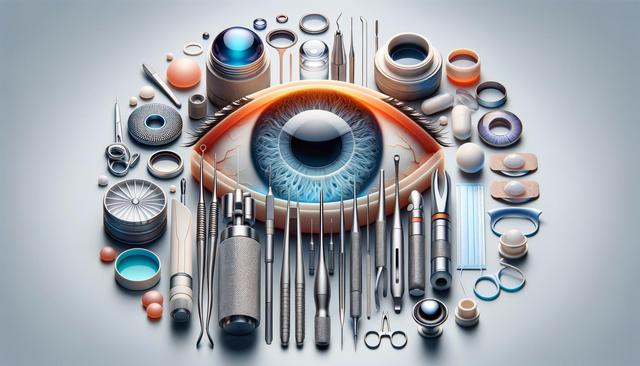Recognizing Cataracts: Symptoms and Causes
Cataracts are characterized by the clouding of the eye’s natural lens, which can lead to impaired vision over time. Understanding the cataracts symptoms and causes is essential for early detection and effective management. Common symptoms include blurry or dim vision, difficulty seeing at night, sensitivity to light, and seeing halos around lights. Colors may also appear faded, and frequent changes in eyeglass prescriptions may be needed.
There are several causes of cataracts. Aging is the most common, but other factors include:
- Prolonged exposure to ultraviolet sunlight
- Diabetes and other medical conditions
- Use of certain medications like corticosteroids
- Previous eye injuries or surgeries
- Genetic predisposition
Recognizing the signs early and seeking advice from an eye care professional can help in determining the right time to explore cataract treatment near me.
Types of Cataracts and How They Differ
There are several types of cataract, each with its own characteristics and progression. Knowing the differences can help patients understand their condition better and discuss treatment options more effectively with their doctor. The most common types include:
- Age-related cataracts: Develop as a result of aging and are the most prevalent form.
- Congenital cataracts: Present at birth or develop during childhood, often due to genetic influences or infections during pregnancy.
- Secondary cataracts: Linked to medical conditions like diabetes or induced by medications such as steroids.
- Traumatic cataracts: Result from an injury to the eye and may develop immediately or years later.
Each type can progress differently, and the choice of treatment can depend on the specific variant and its effect on vision. Consulting a specialist can help determine whether observation or immediate intervention is necessary.
Exploring Treatment Options for Cataracts
When cataracts begin to interfere with daily activities, it may be time to discuss treatment options. While early stages can sometimes be managed with stronger lighting and updated glasses prescriptions, progressive cases often require surgical intervention. Cataract surgery is a commonly performed procedure with a high success rate, where the clouded lens is removed and replaced with a synthetic one.
Among the available new treatments for cataracts, laser-assisted surgeries are gaining popularity for their precision and faster recovery times. These advancements, along with traditional surgical methods, offer effective solutions tailored to individual needs. Patients should also consider:
- Pre-operative assessments to determine eye health
- Recovery plans and expected downtime
- Long-term care and follow-up visits
The right approach depends on the patient’s health, the severity of the cataract, and lifestyle factors. Searching for cataract treatment near me can help locate local facilities with modern technologies and experienced professionals.
Understanding Cataract Intraocular Lens Implantation
One of the key components of modern cataract surgery is the cataract intraocular lens implantation. Once the cloudy lens is removed, it is replaced with an artificial intraocular lens (IOL) to restore clear vision. These lenses come in several varieties, each designed to meet different visual needs:
- Monofocal IOLs: Provide clear vision at one distance, usually for distance vision.
- Multifocal IOLs: Allow for both distance and near vision by using multiple focus zones.
- Toric IOLs: Designed for patients with astigmatism, correcting both cataracts and astigmatism simultaneously.
The choice of lens is an important decision and should be made based on lifestyle, budget, and recommendations from an eye care provider. Proper lens selection can significantly enhance the outcome and improve quality of life after surgery.
Cost Considerations and Finding the Right Provider
Understanding the cataract treatment cost is a critical step in planning for care. Costs can vary depending on the type of surgery, the selected intraocular lens, and whether advanced technologies like laser are used. Additional factors influencing price include:
- Geographic location and facility type
- Surgeon’s experience and reputation
- Pre- and post-operative care requirements
While insurance may cover standard cataract surgery, premium lenses and laser-assisted procedures often involve out-of-pocket expenses. Prospective patients are encouraged to obtain detailed estimates and understand what is covered by their health plan.
When researching cataract treatment near me, it’s important to consider the provider’s qualifications, the range of services offered, and patient reviews. A well-regarded clinic can guide patients through every step, from diagnosis to recovery, ensuring a smooth and informed treatment journey.
Conclusion: Taking the Next Step Toward Clearer Vision
Cataracts can significantly affect everyday life, but with timely diagnosis and the right treatment, vision can often be effectively restored. Whether you’re just starting to notice changes or actively exploring treatment options, understanding the cataracts symptoms and causes, available procedures, and associated costs is crucial. From identifying the types of cataract to choosing the right cataract intraocular lens implantation, each step requires thoughtful consideration. If you’re wondering about options for cataract treatment near me, take the time to research local providers, ask questions, and schedule a consultation. Restoring your vision can be a life-enhancing decision, and being informed is the first step in that journey.




Leave a Reply